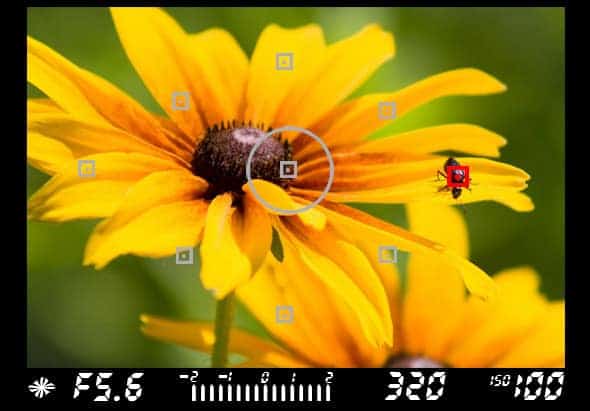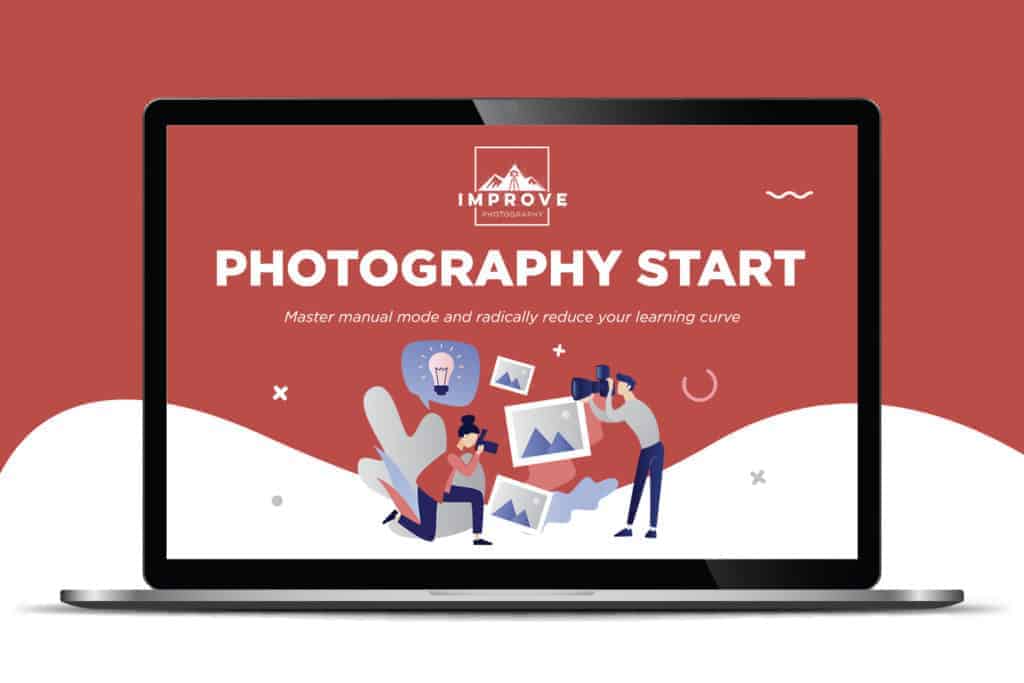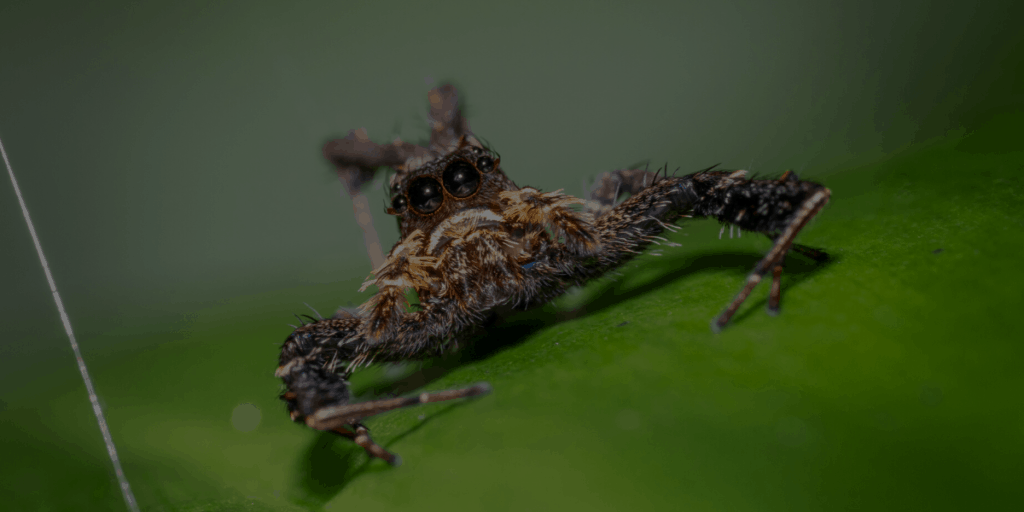Now, I'll teach you all about focus and why your photos may not be as sharp as you'd like them to be.
This morning, I got an email from one of the students in my Photography Start Course who said she spent $2,000 on an expensive camera and another $1,500 on a high-end lens. Still, her pictures don't look as sharp as she would like them to, and wondered why that is. I have to admit that I get this type of question SO OFTEN that I dedicated an entire WEEK of training in my beginner class to teach how to get crystal clear and sharp photos.
It is not uncommon for photographers to think that something must be wrong with their equipment if the photos don't come out sharp, but most of the time I find that the reason is simply a product of mistakes the photographer makes when shooting. You can avoid those issues by understanding how to properly focus your camera.
The #1 focusing mistake of beginning photographers
The #1 mistake I see from beginning photographers in terms of getting clear pictures is that they aren't being precise with their focus. I often ask students where they are focusing, and I get answers like, “On the model's face.” The fact of the matter is that “the face” is far too large of an area to focus on for intimate portraits.
Suppose you're taking a portrait of someone. Now that you've learned how to use shallow depth-of-field from the second part of this series, you want to use it all the time in your portraits to get a creamy background behind the subject. This means you're usually shooting your portraits at f/2.8 or a similar low aperture.
Suppose that you're using a 100mm lens and standing 7 feet (2.1 meters) from the subject. Did you know that, with these settings, only 1.4 inches (3.5 centimeters) of the photo is sharp? That means that, if you focus on the person's cheek, their eyes and nose will be partially blurry.
So if you want your photos to come out crystal clear and sharp, you need to focus PRECISELY and make sure you have enough depth-of-field to make the subject come out sharp.
When shooting portraits, you will almost always focus on the person's eye, since that is where the viewer of the photo will look first. For landscape photographers, check out this article on where to focus in landscape photography.
How to focus on one spot
When you were shooting in automatic mode on your camera, the camera would automatically find the subject and focus for you. Now that you're shooting manually, it's time to take control of your focus as well.
Your camera ALWAYS focuses on one specific spot in the scene. It is physically impossible for a lens to focus on two spots at once. When you look through your viewfinder, you see a bunch of dots (Canon) or small boxes (Nikon). Those markings show you where the camera is focusing. This spot generally blinks red when the camera sets focus.
In the picture below, I chose to focus on the ant on the flower, since that is where I wanted people to look. To do this, I set the camera to spot focus and used the four-way selector on the back of my DSLR to move the focus point onto the ant.

Sometimes, the spot in the picture where you want to focus will not have a focus point available. This is especially true on entry-level Canon Rebel or Nikon D3500 DSLRs, which do not have many focus points. If you find that this is the case, check out this article on focusing and recomposing.
Focus Selections
I hope I didn't confuse you earlier when I said that the camera can ONLY focus on one specific spot in the photo. There are ways that you can activate multiple focus points at once, but in doing so, the camera is just choosing the best of both worlds and compromising between the focus selections to set the focus in the middle somewhere.
99% of the time when I'm out shooting I use spot focus, which allows me to move around the focus point in the viewfinder. My thumb has become adept at constantly moving around the focus point using the four-way selector on the back of the camera as I compose a shot through the viewfinder. Spot focus is great because you have exact control over where the focus is placed.
However, there are other focus selection options on most DSLR cameras. Other than spot focus, you have the ability to choose a small group of between 3 and 5 focus points and tell the camera to choose the best of those points, or you could set your camera to determine which focus point to use all on its own.
I never let the camera take control of focus–it's a recipe for blurry pictures. When I'm shooting sports or fast-moving wildlife, I'll sometimes set the camera to use any of the center area focus points and choose the best one, because the action happens faster than I can move the focus point.
Although there are certainly situations to use other focus selections, I would encourage you to use spot focus and get used to constantly moving around the focus point around the frame as you shoot for the next few months.
Focus Modes
Aside from selecting which focus point(s) the camera is using, you also need to set which type of autofocus the camera will use. For most uses, you'll want to leave your camera on “AF-S” (Nikon) or “One Shot” (Canon). This means that the camera will acquire focus when you press half-way down on the shutter button, and then take the picture when you finish pressing all the way down on the shutter button.
The other main option is continuous focus (displayed on the camera as “AF-C” for Nikon cameras and “AI Servo” for Canon cameras). This mode is used when the subject is moving. Suppose you're shooting a soccer player running toward you. If you use one shot, then the camera focuses when you press half way down on the shutter, and by the time you finish pressing all the way down, the camera takes the picture. In that split second, the athlete will have moved, so the picture will not turn out sharp. Continuous focus (AF-C or AI SERVO) means that the camera continues to find focus all the way up to the instant that you snap the picture.
So why wouldn't you want to use continuous focus all the time? Because it's slightly less precise than one shot. So here's the rule… use one shot (“AF-S” on Nikon, and “One Shot” on Canon) for all shots where the subject is reasonably still like landscapes or most portraits. Use continuous focus (“AF-C” on Nikon, and “AI Servo” on Canon) for all fast-moving shots.
Note: Canon users will also see the option for “AI Focus” when choosing a focus mode. There is a specific use for this, but honestly it's just outdated technology. I have tried it extensively even in the best case scenarios for this focus mode and have always achieved better results with AI Servo.
You have just learned a LOT of the basics of how your camera works, but there is much more to learn. If you want more information like this in video format that you can watch at your own pace, you should really check out the Photography Start Course. It's 22 videos, many filmed on-location, with all the camera settings for each picture, videos of exactly how to put a composition together, and training on getting tack sharp photos.

What's Next?
We have a plethora of resources to help you take your photography to the next level!
First, I would recommend joining the Improve Your Photography Facebook Group. Feel free to ask as many questions as you want and have them answered by photographers just like you!
Check out our amazing Premium Tutorials to learn from some of the top photographers in the world.
Join our Improve Photography Plus Membership for training designed by experts – start a 14-day free trial today!
Find the best photography locations near you!
Our recommended gear list so you don't have to worry about wasting money on the wrong stuff. See our top picks!
Oh, and in case you forgot…
Roses are red,
Violets are blue.
Photography is great,
And you are too.


Thank you for your tutoring, as it is very useful for the beginner.
Thank you for your clear explanations, as it is useful for the beginner.
OMG…this is awesome!! I have looked at the advice from some other photographers but yours is by FAR has been the most helpful to me!! Love the explanations. I am a visual learner but with your examples and text it all works for me. Thank you!! I am by no means a professional very much a beginner. I love taking photographs as a hobby. Slowly building up my confidence with the camera. Right now what makes me anxious, other than learning all the in’s and out’s of the camera, is photographing people. I was asked to do a wedding (only had the camera for about 9 months) and from your advice and basically just clicking away before hand, I was able to get some INCREDIBLE shots. THANK YOU!!
I have dropped a few hints about getting your course…Christmas is just around the corner and so is my birthday!! 😉
when you say :
“This means you’re usually shooting your portraits at f/2.8 or a similar low aperture”..
Shouldn’t that be “high or wide aperture” instead?
You’re right, it would be a wide open aperture. However, this is still a low aperture, as it is a low f-stop
I’m a bit confused by manual spot focusing. If I have the camera set to manual focus, what’s the problem with me just using the focus ring to focus on my subject? Why do I need to use the spot focus with the 4-way selector as well? What would happen if I just used the selector to spot focus and didn’t bother using the focus ring?
Because Sony doesn’t even compare to nikon of canon
Wow! Thank You so Much for the Easy to learn tips for beginners. I have learned more in one day, reading your site, than I have reading hours and hours of other sites….even the ones built toward my specific camera! Thanks again and I will check back often for any more great, informative photography articles. Have a Blessed Day:-)
on the beggning it is best tutorial, I am get in advanced photographer so i will continue the tutorial.
Thanks for the tutorial. This is so far the best site I have seen for the photography tutorials for the beginners and the way the concepts are described and explained, super easy to understand the try it out.
Thanks for ur amazing instructions I followed it and it helped me to much.
Its very useful for the beginners.
Thanks a lot,
So now I am going to have a perfect future decided
#ItsPHOTOGRAPHY luvd it
Thanks for the work..
Thanks so much for these articles! Extremely helpful to somebody that’s just starting out! Very appreciated!
Thanks a lot for this articles.It is really very helpful for amateur photographers. When I was reading above, I have little doubt. Can you clarify again about “This means you’re usually shooting your portraits at f/2.8 or a similar low aperture. Suppose, also, that you’re using a 100mm lens and standing 7 feet (2.1 meters) from the subject. Did you know that, with these settings, that only 1.4 inches (3.5 centimeters) of the photo sharp? ” How have you reached on 1.4 inches ? How can we apply lens formula in Nikon D5100 camera(1/u + 1/v = 1/f) while taking photographs as we read in high school?
Waiting for your prompt reply.
Regards
Do you ever recommend using manual focus? I’m coming back to photography after about 15 years and just got my first DSLR; I used to shoot film and I’m used to manually focusing everything, but this article seems to assume everyone’s using autofocus. I didn’t realize that was more or less the standard?
Many thanks for the blog series. My skills will be vastly improved.
Best article I have read so far on photography, direct, clear and with a language that is not filled with jargo. I have a Canon EOS D1. I have been trying to figure out how to use it manually – especially in aspect of setting the three different S, A and ISO. I always thought P was the best one to use and never understood why my pictures lacked that .. it wasn’t sharpness, because when zooming I could tell i got them sharp .. but still they felt .. not clear. After reading this about keeping it on AV – i started playing around and saw a difference immediatley. Then I started to look at the settings changing and their relations to each other.. and that opened an aha moment and I went over to M and started fiddeling. I got to go out and walk around and train myself on different objects and situations to get the habit, but really – thank you. ( I switch between a Canon 28-105 ultrasonic lins and an wide angle ) Thank you – and keep writing.. you are good at it!
Thank you so much for the articles! I’ve been using camera for so many years, but its basic settings were always like a mystery for me. I absolutely didn’t understand how to adjust camera settings to make my pictures look the way I wanted. So I just had to take dozens of pictures of a same view to get an acceptable result, and then edit the image in Photoshop which sometimes turned it to a painting rather than a photograph.
Thank you so much for this. I’m looking into getting a camera, as my sister, my dad, my uncle, and recently my other sister are all photographers by hobby, and I have developed an interest. My one hesitation was not knowing whether I would be any good at it, but my main problem, I think, would have been not knowing any of the technical stuff. I know a lot off it is just feeling the shot, and also constant practice, drumming techniques and principles into your head until it becomes instinct, but there is also a big technical aspect to it, and before this, I had absolutely no clue whatsoever. I knew terms like ISO and Aperture and Manual Focus, but I didn’t really understand them. Thank you again, because you’ve given me the little education and confidence I needed to really get started.
Great article. I Have never taken a photography class. Your explanation is wonderful.
Very helpful. Just bought a Sony a6000 a few weeks ago. Have been taking decent pictures with built in edits and automatic mode but this article was very informative about the information I was looking for!